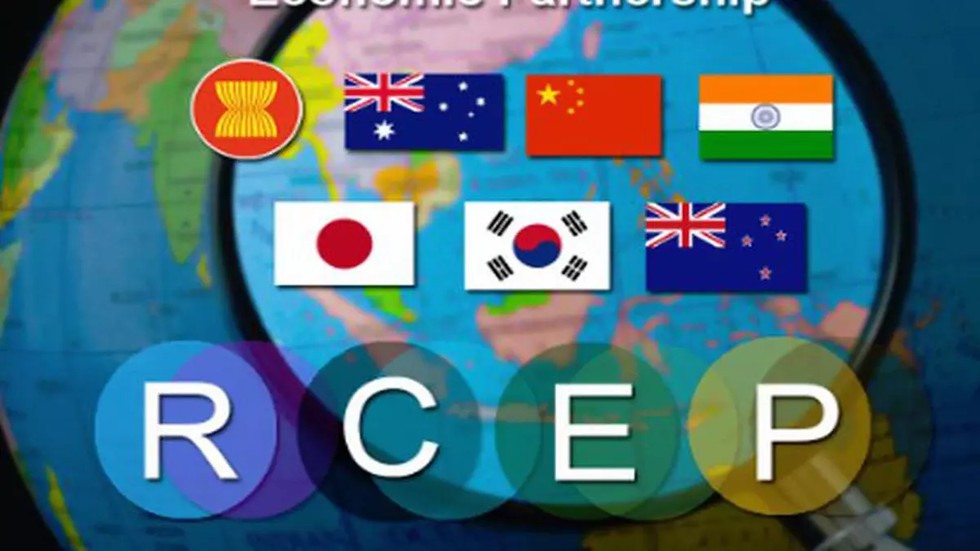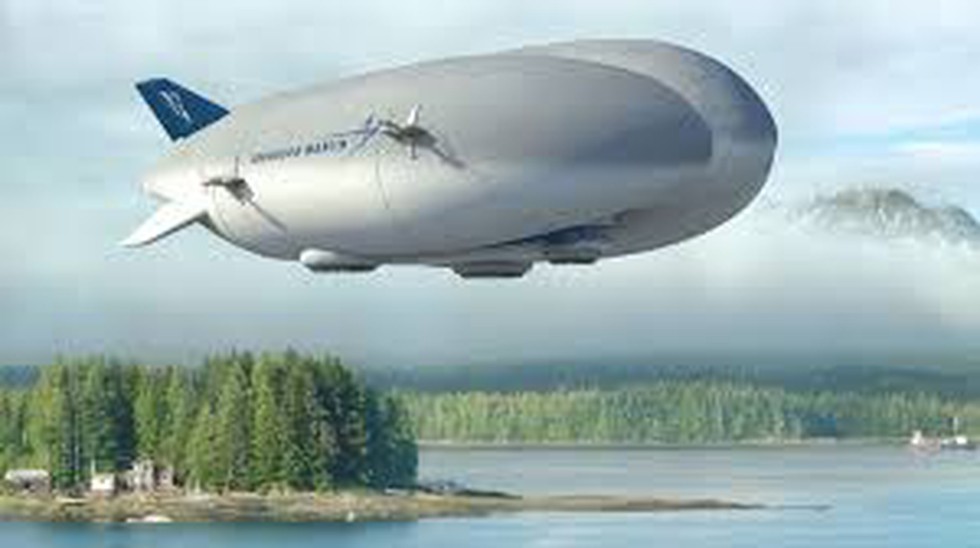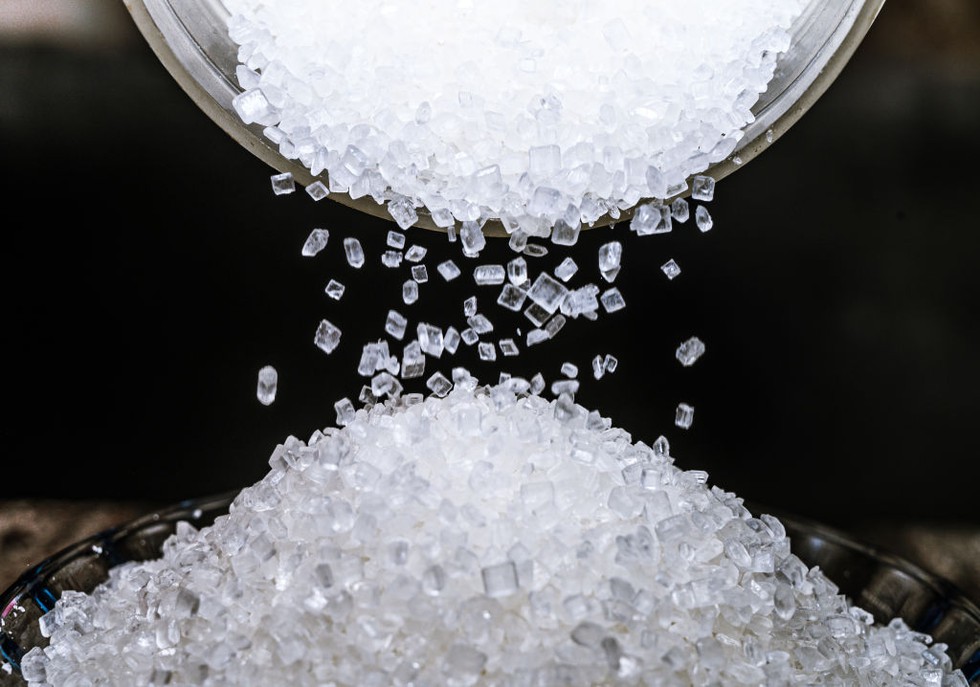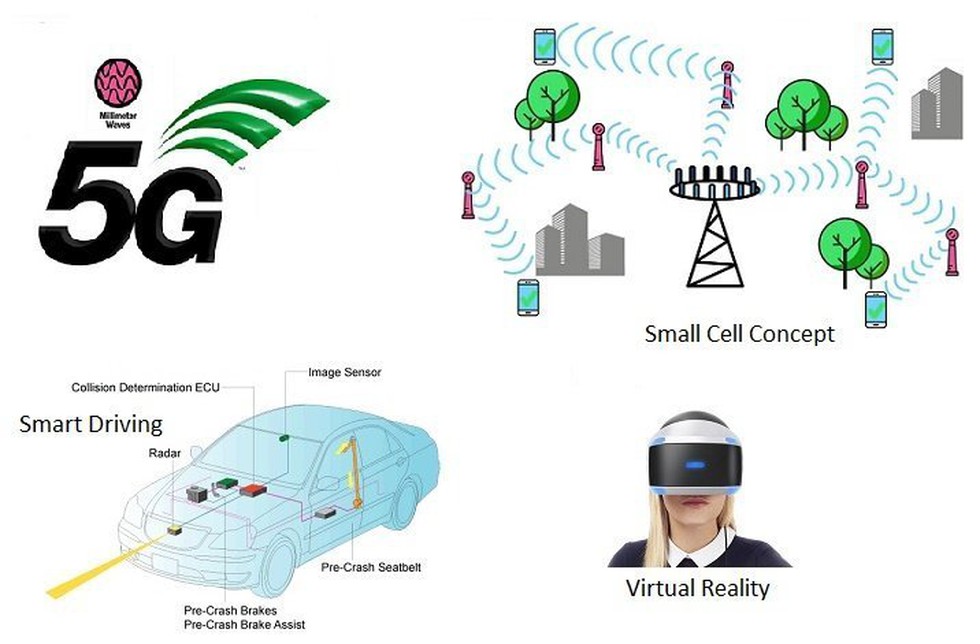Regional Comprehensive Economic Partnership
In a departure from the government’s stated position, the top official from the Niti Aayog said India should be part of the China-backed Regional Economic Partnership (RCEP) trade bloc.

About Regional Comprehensive Economic Partnership:
- It is a proposed agreement between the member states of the Association of Southeast Asian Nations (ASEAN) and its Free Trade Agreement (FTA) partners.
- The pact aims to cover trade in goods and services, intellectual property, etc.
- Member Countries: The RCEP bloc comprises 10 ASEAN group members (Brunei, Cambodia, Indonesia, Malaysia, Myanmar, Singapore, Thailand, the Philippines, Laos and Vietnam) and their six FTA partners - China, Japan, South Korea, Australia and New Zealand.
- RCEP negotiations were launched in November 2012 and entered into force on 1 January 2022
- Objective
- RCEP aims to create an integrated market with 16 countries, making it easier for products and services of each of these countries to be available across this region.
- The negotiations are focused on the following: Trade in goods and services, investment, intellectual property, dispute settlement, e-commerce, small and medium enterprises, and economic cooperation.
What are Airships?
Recently, a few companies have attempted to control the buoyancy of airships — a longstanding challenge that has prevented their use for cargo transportation.

About Airships:
- Airships are lighter-than-air, vertical-lift vehicles that achieve flight by using buoyant gasses that are less dense than surrounding air.
- There are three main types of airships: non-rigid (or blimps), semi-rigid and rigid.
- Typically, these bullet-shaped craft are filled with helium or hydrogen, and composed of three main parts: a balloon-like hull, a gondola and a propulsion system.
- Airships were the first aircraft capable of controlled powered flight and were thought to be the future of travel for some years in the early 20th century.
How airships work?
- Airships are lighter-than-air aircraft that are lifted by gas with a density lower than atmospheric gases. This principle also operates in helium balloons.
- Early airships used hydrogen as the lifting gas since it was cheap, easy to produce, and the lightest existing gas. But hydrogen was also extremely flammable.
- Most modern airships use helium, which is non-combustible.
- Uses: They see limited use today as advertising platforms, for aerial observation by scientists and militaries, and in the tourism industry.
- Advantages: Airships are significantly less polluting than aeroplanes as they do not burn fossil fuels to achieve lift. They can also reach more places than ships or trucks.
Bran
A recent study highlights that keeping bran on millet improves the health benefits and should be promoted in Indian diets to improve diet quality.

About Bran:
- It is the edible broken seed coat, or protective outer layer, of wheat, rye, or other cereal grains, separated from the kernel.
- In flour processing, the coarse chaff, or bran, is removed from the ground kernels by sifting or bolting in a rotating, meshed, cylindrical frame.
- It provides dietary fiber and many different bioactive substances, including phenolic compounds, which can exert a beneficial effect on human health.
- Removing the bran from millets results in decreasing the protein, dietary fibre, fat, mineral and phytate content in them while increasing the carbohydrates and amylose content.
- Dehusked millets are nutritious and should be promoted in Indian diets to improve diet quality, debranned millets are nutritionally inferior and can increase the glycemic load of Indian diets.
What are Millets?
- Millets are a highly varied group of small-seeded grasses, widely grown around the world as cereal crops or grains for fodder and human food.
- This crop is favoured due to its productivity and short growing season under dry, high-temperature conditions (hardy and drought-resistant crops).
- Millets are a powerhouse of nutrients, which score over rice and wheat in terms of minerals, vitamins, and dietary fibre content, as well as amino acid profile.
- Though rich in both iron and zinc, wheat’s protein content comprises glutens, known to trigger gastrointestinal and autoimmune disorders in many people.
- Millets are high in minerals such as calcium, iron, phosphorus, and potassium, and they are an excellent source of phytochemicals such as phenolic compounds when compared to other major cereals (rice, wheat, maize).
- Millets provide a range of health benefits such as antiaging, anticarcinogenic, anti-atherosclerogenic, antibacterial and antioxidant effects.
Allulose
Recently, South Korea has become a top testing ground for the sweetener allulose.

About Allulose:
- It is also known as D-allulose and d-psicose and is naturally present in only certain foods like wheat, raisins, figs and molasses.
- It is also commercially produced from beet sugar or corn using specific enzymes.
- It’s also available as a sugar substitute and can be used in recipes for people who want to cut back (or cut out) sugar, including people with diabetes.
- Manufacturers and researchers say it is 70% as sweet as sugar and almost calorie-free.
- Side effects: High doses may cause side effects like nausea, diarrhea, and other gastrointestinal symptoms.
- It is approved by the U.S. Food and Drug Administration (FDA), which considers it “generally recognized as safe” (GRAS). It’s also approved in some other countries, including Japan, Mexico, Singapore and South Korea.
Millimeter Wave
Recently, the Centre for Development of Telematics (C-DOT) and the Indian Institute of Technology-Roorkee (IIT-Roorkee) have signed an agreement under the Telecom Technology Development Fund (TTDF) scheme of the DoT with the development of a “millimeter wave transceiver for 5G rural connectivity”.

About Millimeter Wave:
- It refers to electromagnetic waves with frequency between 30-300 GHz and wavelength between 10 mm and 1 mm.
- Its frequency spectrum is used for wireless high-speed communications. It is also known as the extremely high frequency, or EHF, band by the International Telecommunication Union.
- Advantages
- It enables higher data rates compared with lower frequencies when used in telecommunications, such as those used for Wi-Fi and current cellular networks.
- The higher frequency range has a high tolerance for bandwidth.
- It offers less latency due to its higher speeds and bandwidth.
- There is less interference, as mm waves don't propagate and interfere with other neighboring cellular systems.
Significance of recent agreement
- It will also encourage small and medium-scale industries to set up their manufacturing units in India which will create job opportunities for our own engineering graduates, due to the use of polymer-based structure in conjunction with metals.
- This will also reduce our over-dependence on semiconductor fabrication industries. The proposed cost for the development of technology is extremely small as against the opportunities it would create.
- Additionally, the project also aims to contribute to generating Intellectual Property Rights (IPRs) and develop a skilled workforce to support the emerging millimetre wave/Sub-THz technology for 5G/6G.
CARICOM
Recently, India and CARICOM held their second Joint Commission meeting, an important event that reviewed and charted the future of their multifaceted relationship.

About CARICOM:
- CARICOM, which stands for Caribbean Community, is the oldest surviving integration movement in the developing world.
- It is an organization of Caribbean countries and dependencies originally established as the Caribbean Community and Commons Market in 1973 by the Treaty of Chaguaramas.
- Main Purposes:
- Promote economic integration and cooperation among its members;
- To ensure that the benefits of integration are equitably shared;
- To coordinate foreign policy;
- Members:
- It has 15 members; Antigua and Barbuda, The Bahamas, Barbados, Belize, Dominica, Grenada, Guyana, Haiti, Jamaica, Montserrat, Saint Kitts and Nevis, Saint Lucia, Saint Vincent and the Grenadines, Suriname, and Trinidad and Tobago.
- Anguilla, Bermuda, the British Virgin Islands, the Cayman Islands, and the Turks and Caicos Islands have associate member status, and Aruba, Colombia, the Dominican Republic, Mexico, Puerto Rico, and Venezuela maintain observer status.
- The Chairmanship of the Community is rotated every six months among the member countries' Heads.
- Secretariat: The CARICOM Secretariat in Georgetown, Guyana, is the principal administrative organ of the Community and is headed by a Secretary General who is the Chief Executive Officer of the Community.
- In 2007, CARICOM officially inaugurated the Caribbean Court of Justice(CCJ), which serves as the final court of appeal for CARICOM members and also handles regional trade disputes.
Agrivoltaic Farming
The Seventh Session of the International Solar Alliance (ISA) culminated in New Delhi. During the site visit, the practical implementation of agrivoltaic systems was showcased to the delegates of various countries.

About Agrivoltaic Farming:
- It is the practice of growing crops underneath solar panels.
- The panels are positioned 2-3 metres off the ground and sit at an angle of 30 degrees, providing shade and offering crops protection from the weather.
- This farming primarily focuses on the simultaneous use of land for both agriculture and solar energy generation.
- It’s also sometimes referred to as Agri solar, dual-use solar, or low-impact solar.
- Solar panels have to sometimes be elevated or suspended to allow plants to grow beneath them.
- Another option is putting them on the roofs of greenhouses. This allows enough light and rainwater to reach the crops, as well as providing access to farm machinery.
- It uses poles or frames to mount solar panels on the ground, leaving space for crops to grow under or around them. Some solar panels can also rotate or form a canopy to adjust the amount of sunlight and shade on the crops.
- Advantages
- This increases land-use efficiency, as it lets solar farms and agriculture share ground, rather than making them compete against one another.
- And certain crops appear to thrive when grown in such environments, according to a number of recent studies.
- The shade from the panels protects vegetables from heat stress and water loss.
Black-Footed Ferret
Antonia, a cloned black-footed ferret at the Smithsonian’s National Zoo and Conservation Biology Institute, has produced two healthy offspring that will help build genetic diversity in their recovering population

About Black-Footed Ferret:
- It belongs to the weasel family and is the only ferret that is native to North America.
- These are considered alert, agile, and curious mammals, and are known to exhibit keen senses of smell, sight, and hearing.
- Distribution: It ranges throughout the interior regions of North America, from southern Canada to northern Mexico.
- Habitat: It can be found in the short or middle grass prairies and rolling hills of North America.
- They live within the abandoned burrows of prairie dogs and use these complex underground tunnels for shelter and hunting.
- It is nocturnal and is active mostly during the night, with peak hours around dusk.
- Ferrets reduce their activity levels in the winter, sometimes remaining underground for up to a week.
- These are carnivores; they mostly eat prairie dogs, also sometimes mice, ground squirrels, or other small animals.
- Reproduction: They exhibit a phenomenon known as "delayed implantation," in which the fertilized egg does not start developing until conditions are appropriate for gestation.
- Conservation status
- IUCN: Endangered
- CITES: Appendix I
- Threats: It is believed that the loss of natural habitat and the rise in the incidence of diseases are the biggest reasons behind the decline in their population.
Chhath Puja
Recently, the Prime Minister of India extended his greetings on the occasion of Chhath Puja.

About Chhath Puja:
- It is an important Hindu festival celebrated in states like Bihar, Uttar Pradesh, Jharkhand, and West Bengal.
- This festival is dedicated to God Surya and his sister Shashti Devi, often referred to as Chhathi Maiya, and it involves religious rituals.
- The most unique feature of this Chhath Puja is that there is no Murti Pujan or Idol Worshipping.
- The festival is celebrated between the months of October and November.
- The Chhath festival begins as the Diwali festival ends.
- It is celebrated for four consecutive days and celebrated with great reverence and dedication.
- The first day of the Chhath Puja includes taking a dip in the holy river/any water body. People also take the Ganges water to their homes to perform special offerings and rituals. Houses are thoroughly cleaned on this day.
- The second day of Chhath, also known as Kharna, involves devotees observing a day-long fast, which is broken in the late evening after performing the worship of Mother Earth.
- The third day of Chhath goes into the preparation of the prasad (offerings) for the evening offerings, also known as Sanjhiya Arghya.In the evening, large numbers of devotees gather on the banks of rivers and make offerings (Arghya) to the setting sun. The night of the third day witnesses a colorful event known as Kosi.
- On the fourth and final day of Chhath, family members and friends go to the banks of rivers before sunrise and make offerings (Arghya) to the rising sun. After this ritual, devotees break their fast and distribute Prasad to neighbors and relatives.
Tuna Fish
The Department of Fisheries, under the Ministry of Fisheries, Animal Husbandry and Dairying has notified the Development of Tuna Cluster in the Andaman and Nicobar Islands under the Pradhan Mantri Matsya Sampada Yojana (PMMSY).

About Tuna Fish:
- They are pelagic marine fish, spending their entire lives relatively near the surface of tropical, subtropical and temperate oceans and seas.
- There are seven main species of tuna consumed by humans including albacore, skipjack, yellowfin and three species of bluefin tuna.
- Habitat: They can be found in tropical and temperate regions of all oceans.
- Unlike other fish, tuna are warm-blooded. Their body temperatures are as much as 12 degrees C higher than the water they swim in.
- Tuna swim incredible distances as they migrate.
- Significance of Tuna Cluster: It is expected to generate economies of scale, increase incomes, and accelerate organized growth in fisheries across the country.
Pradhan Mantri Matsya Sampada Yojana
- It was launched in September 2020 with an aim to double the income of fish farmers and fishers in the country.
- It focuses on activities with the potential to generate employment such as seaweed and ornamental fish cultivation. It also emphasises the breeding technique for quality brood, seed & feed and species diversification.
- It is an umbrella scheme with two separate components namely (a) Central Sector Scheme (CS) and (b) Centrally Sponsored Scheme (CSS).
- The CSS Component is further segregated into Non-beneficiary-oriented and beneficiary-orientated subcomponents/activities under the following three broad heads:
- Enhancement of Production and Productivity
- Infrastructure and Post-harvest Management
- Fisheries Management and Regulatory Framework
- PMMSY will be implemented in all the States and Union Territories for a period of 5 (five) years from FY 2020-21 to FY 2024-25.


























































































































































.png)
.png)
.png)
.png)
.png)


.png)
.png)
.png)





.png)
.png)






.png)
.png)
.png)
.png)
.png)
.png)
.png)
.png)
.png)

.png)







.png)
.png)


.png)
.png)
.png)


.png)

.png)
.png)





.jpg)

.png)
.png)


.png)

.png)
.png)
.png)

.jpg)

.jpg)


.png)

.png)
.png)
.png)
.png)
.png)
.png)
.png)
.png)
.png)
.png)




.png)

.png)





.png)
.png)
.png)
.png)
.png)
.png)
.png)
.png)
.png)
.png)
.jpg)
.jpg)

.png)
.png)
.png)
.png)
.png)
.png)
.png)
.png)
.png)
.png)
.png)
.png)
.png)
.png)
.png)
.png)
.png)
.png)
.png)
.png)
.png)
.png)



.png)
.png)

.jpg)
.jpg)


.jpg)
.jpg)
.jpg)
.jpg)
.jpg)

.jpg)








.jpg)
.jpg)
.jpg)
.jpg)
.jpg)

















.jpg)
.jpg)







.jpg)


















.jpg)
.jpg)






























































































.jpg)
.jpg)


























.jpg)

.jpg)










.jpg)








.jpg)




.jpg)










.jpg)


















.jpg)












































.jpg)














.jpg)
.jpg)
.jpg)





.jpg)

.jpg)
.jpg)





































































.jpg)


































.jpg)
.jpg)
















































.jpg)












.jpg)


.jpg)




.jpg)
.jpg)
.jpg)

.jpg)
.jpg)
.jpg)
.jpg)

.jpg)
.jpg)
.jpg)

.jpg)
.jpg)
.jpg)
.jpg)
.jpg)
.jpg)
.jpg)
.jpg)

.jpg)


.jpg)
.jpg)
.jpg)
.jpg)
.jpg)
.jpg)
.jpg)
.jpg)
.jpg)
.jpg)











.jpg)
.jpg)





.jpg)
.jpg)
.jpg)
























.jpg)
























.jpg)









.jpg)
.jpg)







.jpg)
.jpg)









































.jpg)
.jpg)
.jpg)
.jpg)
.jpg)

.jpg)
.jpg)
.jpg)
.jpg)
.jpg)


.jpg)
.jpg)
.jpg)
.jpg)
.jpg)

.jpg)
.jpg)
.jpg)
.jpg)
.jpg)
.jpg)
.jpg)
.jpg)
.jpg)
.jpg)
.png)

.png)
.png)

.png)
.png)
.png)
.png)


.jpg)
.jpg)

.jpg)
.jpg)
.jpg)

.png)
.png)
.png)
.png)
.png)
.png)
.png)

.png)
.png)
.png)
.png)
.png)
.png)
.png)
.png)
.png)
.png)





































































-min.png)



.png)




.png)








































